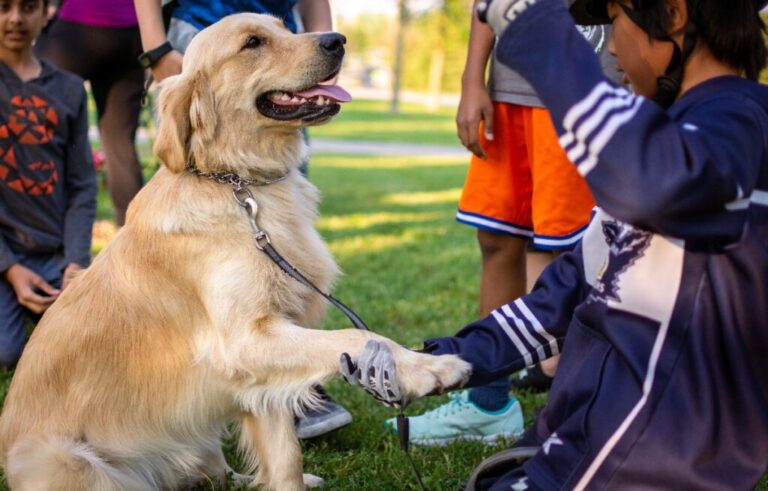Labrador Retriever Revealed: Unmasking Common Misconceptions
Common Misconceptions about Labrador Retrievers
Labrador Retrievers are beloved dogs known for their friendly and gentle nature. However, there are several common misconceptions surrounding this breed that need to be addressed. Let’s debunk these misconceptions one by one.
Labrador Retrievers Are Aggressive
Contrary to this misconception, Labrador Retrievers are not aggressive dogs. In fact, they are known for their kind and friendly temperament, making them great family pets. Their gentle nature has even led to their use as therapy dogs due to their ability to provide comfort and support to individuals in need. It’s important to remember that individual behavior can vary, but aggression is not a characteristic commonly associated with Labradors. To learn more about the temperament of Labrador Retrievers, check out our article on understanding Labrador Retrievers’ temperament.
Labrador Retrievers Are Overweight and Food-Obsessed
Labradors do have a genetic tendency to overeat, leading to weight gain. However, this does not mean that all Labradors are overweight or food-obsessed. With proper diet and exercise, it is entirely possible to manage their weight effectively. Portion control and regular physical activity are key to keeping Labradors in a healthy condition. For more information on managing Labrador Retrievers’ weight, refer to our article on senior Labrador Retriever care.
Labrador Retrievers Are Natural Swimmers
While it is true that Labrador Retrievers have webbed toes that make swimming easier for them, not all Labradors are natural swimmers by default. Some Labradors may need proper introduction and training to become comfortable in the water. It is essential to provide gradual exposure to water and teach them how to swim safely. For guidance on introducing Labradors to water, take a look at our article on introducing Labrador Retrievers to water.
Labrador Retrievers Are Always Purebred
Labrador Retrievers are often associated with being purebred, but it’s important to note that not all Labradors are necessarily purebred. It is possible to find Labradors that are a mix of different breeds, which adds to the diversity in their appearance and behavior. Mixed-breed Labradors can be just as loving and loyal as their purebred counterparts. To learn more about different Labrador Retriever mixes, see our article on Labrador Retriever mixes: pros and cons.
Labrador Retrievers Are Excellent Hunting Dogs
While Labrador Retrievers have a history of being hunting dogs, it is a misconception that all Labradors are excellent hunters. The hunting abilities of Labradors can vary from one individual to another. Some Labradors may not exhibit strong hunting instincts or possess the necessary skills for hunting activities. It’s important to recognize that Labradors can excel in various activities and roles, not just hunting. For more information on Labrador Retrievers’ behavioral traits, check out our article on Labrador Retrievers’ temperament and trainability.
Labrador Retrievers Require High-Intensity Exercise
Labrador Retrievers are energetic dogs that require regular exercise, but it is not accurate to say they need high-intensity exercise all the time. While they enjoy physical activity, the exercise needs of Labradors can be met through various forms of exercise, including walks, playtime, and mental stimulation. It’s important to provide a balance of physical and mental stimulation to keep them happy and healthy. To learn more about Labrador Retrievers’ exercise requirements, refer to our article on exercise needs of Labrador Retrievers.
By addressing these common misconceptions, we can better understand the true nature of Labrador Retrievers. They are gentle, friendly, and versatile dogs that can bring joy and companionship to their families.
Debunking the Misconceptions
Labrador Retrievers are often subject to misconceptions that can lead to misunderstandings about their exercise needs, swimming abilities, genetic predisposition to obesity, shedding and grooming needs, as well as their temperament and trainability. Let’s delve into these misconceptions and uncover the truth about Labrador Retrievers.
Labrador Retrievers’ Exercise Needs
Contrary to the belief that Labrador Retrievers require constant high-intensity exercise, the truth is that they are adaptable companions that can be active when needed but also calm and well-behaved indoors. While they do enjoy physical activity, Labs are content with downtime and relaxing at home. It’s important to strike a balance and provide them with regular exercise to keep them physically and mentally stimulated (Friendicoes).
Labrador Retrievers benefit from a consistent exercise routine. A normally healthy adult Lab will generally require about 1 hour of exercise per day, but individual needs may vary depending on their energy levels and age. More relaxed Labs may need just 45 minutes per day, while more energetic Labs may require 1.5 hours or more of exercise (Labrador Training HQ).
Labrador Retrievers’ Swimming Abilities
While Labrador Retrievers are often regarded as natural swimmers, it is a misconception that all Labs will instinctively take to the water. While many Labs do enjoy swimming and have a natural affinity for water, not all individuals of the breed may take to it right away. Some Labs may need gentle introduction and training to become comfortable in the water. It’s important to ensure their safety and provide them with positive experiences to foster their love for swimming (Friendicoes).
Labrador Retrievers’ Genetic Predisposition to Obesity
Labrador Retrievers are sometimes believed to be genetically predisposed to obesity due to a specific gene mutation known as POMC. However, it’s important to note that not all Labs have this mutation, and it is not a universal trait among the breed. The genetic mutation that contributes to weight issues is more prevalent among Labrador Retrievers in the United States compared to those in the United Kingdom, despite both countries sharing common Labrador bloodlines. The breed’s popularity and gentle temperament may also contribute to their weight problems, as they are often rewarded with treats for being good family pets, leading to overfeeding and obesity (New York Times).
To manage Labrador Retrievers’ weight effectively, it’s important to provide them with a balanced diet, appropriate portion sizes, and regular exercise. Monitoring their food intake, using interactive feeding toys, and avoiding excessive treats can help prevent weight gain and associated health issues. Regular check-ups with a veterinarian will also ensure your Lab maintains a healthy weight and overall well-being.
Labrador Retrievers’ Shedding and Grooming Needs
Labrador Retrievers have a short, dense double coat that is designed to keep them warm and protected. While Labs do shed, it is a misconception that they are heavy shedders. Regular grooming can help manage shedding and keep their coat healthy and shiny. Labs benefit from weekly brushing to remove loose hair and minimize shedding. Additionally, they may experience heavier shedding during seasonal transitions. Proper grooming also includes regular nail trims, teeth brushing, and ear cleaning to maintain their overall hygiene and health (how to groom your labrador retriever).
Labrador Retrievers’ Temperament and Trainability
Labrador Retrievers are often believed to be easily trainable due to their intelligence and eagerness to please. While they generally have a gentle and friendly nature, it’s important to remember that each dog is unique and may have its own challenges when it comes to training. While Labs possess the potential to excel in obedience training, some individuals may require more patience and consistent training methods to learn commands and behaviors. Positive reinforcement techniques, such as rewards and treats, along with early socialization and consistent training, can help shape a well-behaved and obedient Labrador Retriever (understanding labrador retrievers temperament).
By debunking these misconceptions, we can gain a better understanding of Labrador Retrievers and provide them with the care, training, and exercise they truly need. Remember, Labradors are unique individuals, and while they share certain characteristics as a breed, each dog may have their own preferences and requirements. By catering to their specific needs, you can ensure a happy, healthy, and well-rounded companion.
The Truth about Labrador Retrievers
Labrador Retrievers have a reputation for their wonderful temperament and characteristics. Let’s explore some of the truths about these gentle and friendly dogs.
Labrador Retrievers’ Gentle and Friendly Nature
Contrary to the misconception that Labradors are aggressive, they are known to be gentle, kind, and friendly dogs, which makes them great family pets. Labradors are often used as therapy dogs due to their calm and loving nature. Their gentle temperament and sociable attitude make them well-suited for households with children and other pets. Labrador Retrievers love to be a part of the family and are known for their loyalty and affectionate nature.
Managing Labrador Retrievers’ Weight
While Labrador Retrievers are often associated with being overweight and food-obsessed, it’s important to note that proper weight management is essential for their overall health. Labradors do have a genetic predisposition to obesity, so it’s crucial to provide them with a well-balanced diet and regular exercise to maintain a healthy weight. Consult with your veterinarian to determine the appropriate feeding portions and choose high-quality dog food that meets their nutritional needs. Regular exercise, such as daily walks or playtime, is also important to keep them active and prevent weight gain.
Understanding Labrador Retrievers’ Energy Levels
Labrador Retrievers are known for their energy and athleticism, but it’s a common misconception that they require high-intensity exercise at all times. While they do enjoy physical activity, Labradors are also content with downtime and relaxing at home. They are adaptable companions that can be active when needed but also calm and well-behaved indoors. Regular exercise is still important to keep them mentally and physically stimulated. Understanding your Labrador’s energy levels and providing appropriate exercise is key to keeping them happy and healthy.
Introducing Labrador Retrievers to Water
Labrador Retrievers are often recognized for their natural swimming abilities, but not all Labradors are born with an innate love for water. While many Labradors do enjoy swimming, it’s not a universal trait. Some may need encouragement and positive reinforcement to feel comfortable in the water. If you want to introduce your Labrador to swimming, start with shallow and calm waters, and use positive reinforcement techniques to make it an enjoyable experience. Gradually increase the depth and introduce more challenging water conditions as your Labrador becomes more confident.
Training Labrador Retrievers effectively
Labrador Retrievers are generally known for their trainability, but it’s important to remember that each dog is unique and may have its own challenges. While they are intelligent and eager to please, some Labradors may require more patience and consistent training methods to learn commands and behaviors. Positive reinforcement training techniques, such as rewards and praise, are highly effective with Labradors. Consistency, patience, and regular training sessions are key to successfully training your Labrador and ensuring good behavior.
Understanding the true nature of Labrador Retrievers can help you build a strong and loving relationship with your furry companion. Their gentle and friendly disposition, combined with proper weight management, appropriate exercise, and effective training techniques, will contribute to a happy and fulfilling life together.






